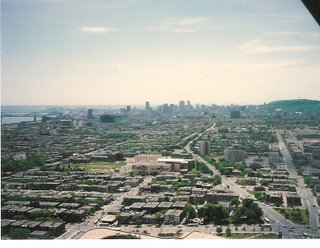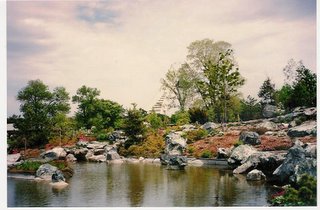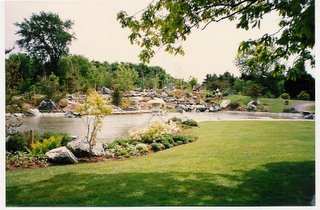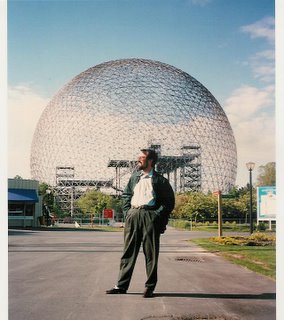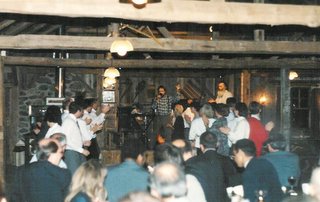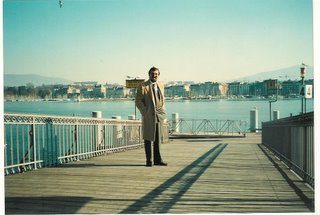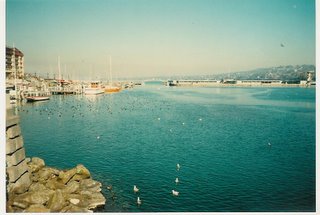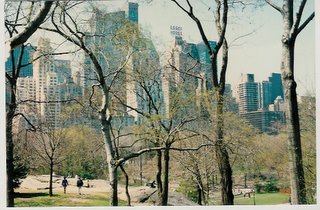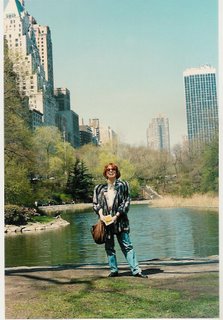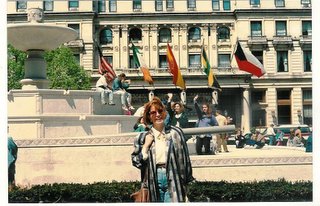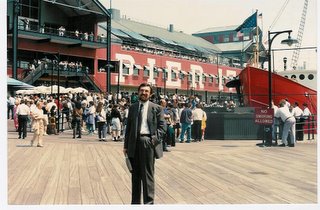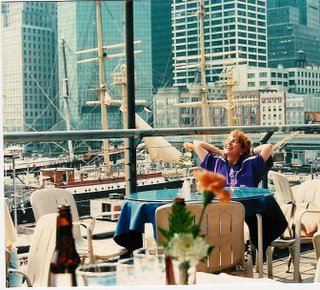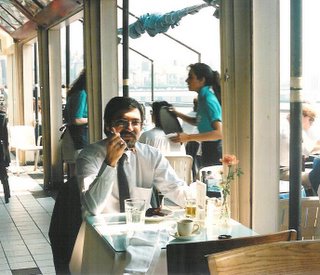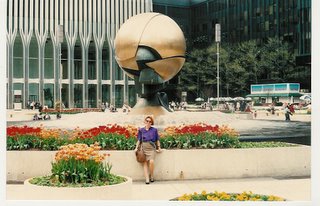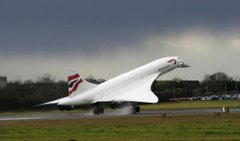The Euroairport serves Basel, Mulhouse, and Freiburg, i. e. Switzerland, France and Germany, and is quite close to the «Three Countries Corner». This trip in August/September 1990 covered Basel, Alsace, and Baden-Württemberg regions, starting at the so-called «Regio TriRhena», and was definitely dependent on the Rhine.
Basel is Switzerland's second largest city, largely due to its location on the Rhine, and has the oldest university of the Swiss Confederation dating from 1459. Erasmus, Paracelsus, Euler and Nietzsche worked there"

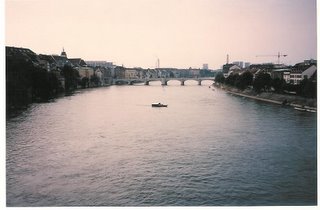
"THE RHINE is a 1320 km-long river. It passes through six countries : Switzerland, Liechtenstein, Austria, Germany, France and the Netherlands, and sets up the natural border between Switzerland and Liechtenstein, between Switzerland and Germany, and between Germany and France. In Basel - the Rhine Knee - it changes its east-western direction of flow up to the north"

"MÜNSTER - The history of Basel as an urban settlement begins on the Cathedral Hill. In the first century BC, Celts lived there in a fortified «oppidum». The first traces of a cathedral date from the Carolingian period, but the building was destroyed in 917. At the beginning of the 11th century, Basel had a new cathedral, which was replaced by a late Romanesque building in the 13th century. This one was restored in the Gothic style after the 1356 earthquake. The tomb of Erasmus lies inside the Münster"
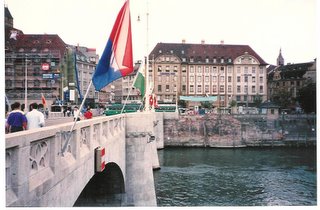

"THE MITTLERE BRÜCKE - Built by Prince-Bishop Heinrich von Thun, the first bridge across the Rhine was opened in Basel in 1226, and the fortified town of Kleinbasel was established for its protection. In 1905, a new Mittlere Brücke was built to allow electric trams to run through"

"HOTEL DES TROIS ROIS - Feel like at home in Basel: Over centuries guests from all world enjoyed the way of life maintained here par excellence, so says the pub. The Hotel Drei Könige is Europe's oldest hotel, as well as the most splendid in Basel, and is being comprehensively renovated. The reopening is scheduled for March 2006. We'll see then whether they did manage to restore it to its former glory"

"AUGUSTINERGASSE - Between the Rheinsprung and the Münsterplatz lies the Augustinergasse, with the Museums of Cultures and of Natural History. On the opposite side stand well-preserved private Gothic and Baroque houses, whose residents enjoy a unique view over the Rhine"
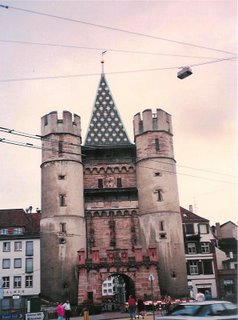

"SPALENTOR - With Basel's expansion in the 19th century, the medieval walls and its entrances disappeared. However, the most beautiful of the gates - the Spalentor, erected in the 14th century - remained. The gate is adorned with glass tiles and humorous 15th century figures, and keeps inside a copy of the city's customs decree of 1795"

"THE HOLBEIN FOUNTAIN - One of the most beautiful Renaissance fountains of Switzerland. Originally in front of the Spalentor, it was moved to the Spalenvorstadt in 1839. The column with its ornaments goes back to the 16th century, and on its top a figure playing bagpipes can be seen. The octagonal tub was added after the fountain had been moved to the Spalenvorstadt"
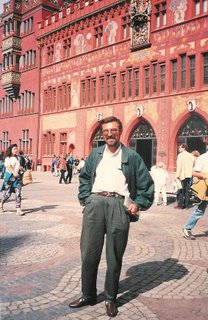
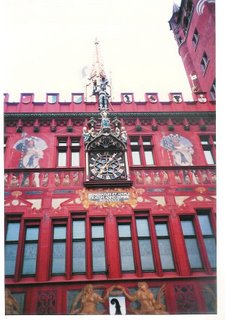
"MARKTPLATZ - Every day except Sunday, fresh vegetables, fruit and flowers are on sale at Marktplatz, which is dominated by the Rathaus (Town Hall), the seat of the government of the Canton of Basel-City. The Rathaus building was constructed in stages from the beginning of the 16th century through the end of the 19th century, although a town hall is deemed to be in existence at this site since the 14th century. The coats of arms of the 12 cantons that formed the Swiss Confederation at the 16th century are painted on the battlements, and the façade was painted by Hans Bock with mock architectural features"


"RATHAUS - In 1900 the Rathaus underwent a further extension, with the addition of the wing on the extreme left and the tower on the right. At the same time the old rear building dating from the 14th century was demolished and replaced by a new structure. This was the period of historicism, when architects played with elements of past styles. The structural forms of the old parts were incorporated into the new buildings, but the decorations are already in what was then the latest style, Art Nouveau"

"THE TINGUELY FOUNTAIN - In 1977 Jean Tinguely installed a number of playful mechanical sculptures in a large water basin at the former site of the stage of the old Stadttheater, creating a new symbol for the city"



